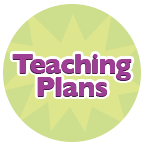INTRODUCTION TO THE UNIT
The Read Aloud and two Shared Reading texts in this unit focus on recognizing personal interests, strengths, and accomplishments. Students will be engaged in inquiring about what makes each person special.
The Read Aloud text, I Like Myself, helps students understand what the little girl likes about herself and why. This will lead students to discuss themselves and what they like about themselves.
One Shared Reading text, Benny’s Special Day, demonstrates how a new friend helped figure out what is special about Benny. The other Shared Reading text, See What We Can Do!, is a descriptive scrapbook that shows what each child thinks is special about himself or herself by showing what he/she can do.
Opportunities for oral language activities and playful learning are intermingled throughout the unit as students discuss what is special about themselves, draw their special characteristics, use stick puppets to re–enact a story, and make masks to discuss who they are. Contextual Working with Words lessons accompany each Shared Reading text and can be done with the class or with a small group of students with similar needs. A brief text–type writing study invites students to draw and describe what is special about themselves (Description: Descriptive Labelling). The mentor text to support this writing project is See What We Can Do!
For details about the unit, see the I Am Special Plan–at–a–Glance Chart.
Inquiry Question
Critical thinking is stimulated when we have a key question to focus our thoughts. This inquiry question can lead us to ask new questions, seek possible answers, and problem–solve to look for a solution. It draws us deeper into an issue and helps us to make connections. The inquiry question for this unit is “What makes me special?”
Students explore the inquiry question by considering how others view them and how they view themselves. Throughout the unit, students will focus on how we look at ourselves, and what are our personal interests, strengths, and accomplishments. As the unit concludes, students will be able to respond to the inquiry question by providing examples of what makes them special. They will be exposed to the idea that sometimes others help us figure out what makes us special.
ELL Note
This unit provides a wonderful opportunity to tap into the English Language Learner’s (ELL’s) unique experiences and strengths. Show a variety of pictures of children helping around the house, playing sports or musical instruments, as well as real objects such as a dish towel, a ball, cutlery, and crayons so the ELL can readily identify interests and the skills he/she possesses.
The illustrations in I Like Myself and Benny’s Special Day can be used to teach colour words, parts of the body, and descriptive words and actions. To facilitate comprehension of the language in Benny’s Special Day, play ‘Follow the Leader,’ reviewing vocabulary from the story such as: ‘run,’ ‘bark,’ ‘fly through the air,’ ‘twirl,’ ‘smile,’ ‘frown,’ ‘be scary,’ ‘look at the ground,’ and so on.
If available, an adult or older student volunteer, fluent in the ELL’s language, can partner with the ELL and explain the stories, page by page, in the student’s first language. Together they can discuss what is happening, what is funny, and what the student is thinking while you observe to what extent the ELL is engaged, demonstrates fluency, and comprehends the text. This same volunteer can find out more details about the student’s special skills and then help the student write a sentence in both the student’s first language and English to accompany the student’s artwork.
Note when each student is doing something special, for example, “Lee you’re speaking Mandarin with David. It’s so special to be able to speak another language!” Then attach a large sticky note that says, “Lee speaks Mandarin” to a chart titled, ‘How We Are Special.’
The theme of the block centre and art centre during the unit can be, ‘Create Something Special,’ and photos can be taken of students in action. While students are working, play the song, Benny’s Special Day, as background music so they can absorb the rhythm and words. Involve ELLs in dramatic play by having them manipulate puppets while other students do the speaking. Once the ELL gains confidence, he or she can take on a speaking role.
MONITORING PROGRESS
You will have numerous opportunities to observe students as they inquire through talk, dramatization, movement, artwork, and play.- The Inquiry Assessment provides a checklist for you to observe and note student engagement with, and understanding of, the inquiry topic.
You will also wish to monitor other developmental areas. You may choose to use one or more of these assessment tools during the unit:
- Use the Oral Language Assessment Scale to quickly observe and note oral language behaviours. Or, you may choose to use the Oral Language Development Checklist (see the K–3 Program and Planning Guide, pp. 81–83) for a more detailed monitoring of progress of students needing support in this area.
- Use the Book Handling and Print Tracking Assessment (see the Kindergarten Reading Guide, p. 13) to check on early literacy concept development.
- Use the Working with Words Checklists (see the Kindergarten Working with Words Guide, pp. 97–105) to record observed development in phonemic/phonological awareness, letter recognition, knowledge of high–frequency words, word solving and building skills, and the use of context (language predictability).
